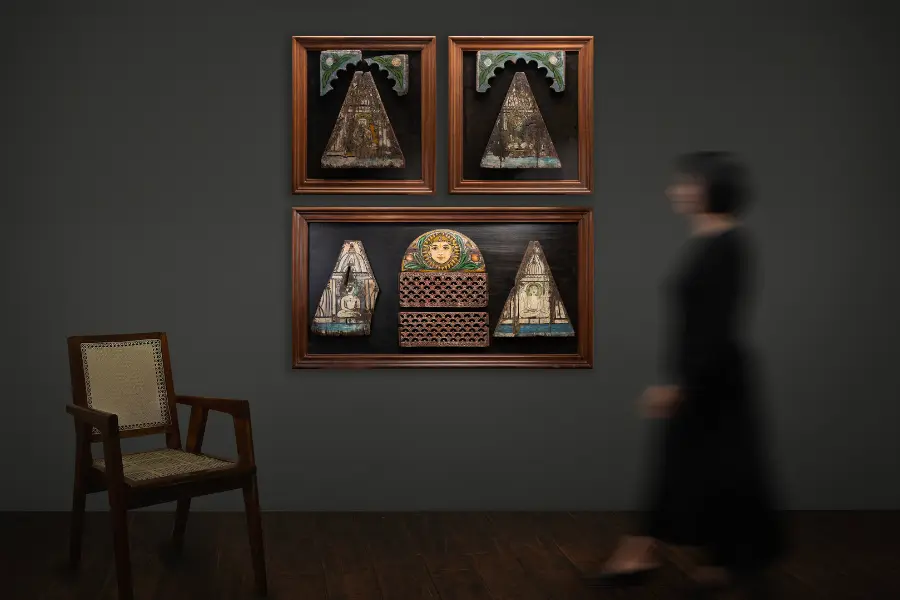Luxury isn’t just about grand spaces—it’s about how a place makes you feel. Step into an exquisitely designed boutique hotel, and suddenly, the world outside fades. The lighting is soft, the textures indulgent, the scent subtle yet inviting. Every element is carefully curated to offer an experience, not just a stay. In small hotel interior design, where space is limited, the challenge isn’t just to impress—it’s to enchant.
How do you make a compact space feel opulent? How do you create an experience so refined that guests feel transported the moment they walk through the door? The secret lies in thoughtful design—an interplay of light, texture, color, and detail that transforms modest spaces into havens of luxury.
First Impressions: The Art of Arrival

Luxury begins the moment a guest crosses the threshold. The lobby—no matter how small—must set the tone for the stay. A dramatic light fixture, an oversized piece of artwork, or a sculptural reception desk immediately signals sophistication. A carefully chosen scent lingers in the air, and a plush chair invites guests to pause. The experience is seamless, effortless, yet unforgettable.
For smaller hotels, the key is focus. A single statement piece—a handcrafted wooden console, a striking chandelier, or a curated bookshelf with bespoke design objects—creates an instant sense of grandeur. The goal is not to fill the space but to define it.
Layered Lighting: The Secret to Elegance
Lighting has the power to make a space feel intimate, expansive, or dramatic. In luxury interiors, it’s all about layering.
- Ambient lighting sets the overall mood—soft and inviting, never harsh. Recessed lighting, cove lighting, or dimmable chandeliers provide the perfect foundation.
- Accent lighting highlights architectural details, artwork, or textured walls. Imagine a warm glow behind a velvet headboard or soft uplighting that makes a stone wall feel even more dramatic.
- Task lighting ensures function without compromising style—sophisticated bedside lamps, elegant vanity lights, or sleek pendant lights over a coffee station.
A beautifully lit space instantly elevates the guest experience, making even the most compact rooms feel rich and inviting.
The Power of Texture and Materials
Luxury is tactile. The coolness of marble beneath your fingertips, the softness of cashmere throws, the quiet weight of a handcrafted ceramic vase—these sensory details define the experience of a space.
In small hotel interior design, every surface should be an invitation to touch. Consider:
- Velvet or linen-upholstered furniture for a plush, inviting feel.
- Brass or matte black fixtures for an understated yet striking contrast.
- Textured wallpaper, fluted wood panels, or woven fabric walls to add depth.
Even the smallest room can exude elegance when materials are chosen with care. A simple wooden nightstand transforms into a luxury piece when topped with a slab of marble or inlaid with brass detailing.
Maximizing Space Without Sacrificing Style

Luxury is never cluttered. In small hotels, smart space planning is essential—every piece must serve a purpose while contributing to the overall aesthetic.
- Custom-built furniture ensures a seamless fit, maximizing function without overwhelming the space. A floating desk that doubles as a vanity, or a sleek bench with hidden storage, keeps the room open and uncluttered.
- Strategic mirrors create the illusion of expansiveness. A large, well-placed mirror can make a small room feel twice its size, while mirrored surfaces on furniture reflect light and add a touch of glamour.
- Multifunctional design keeps things effortless—ottomans that store extra linens, headboards with built-in lighting, and sleek wall-mounted shelves that replace bulky bedside tables.
Color Palettes: Timeless, Not Trendy
The most luxurious hotels don’t chase trends—they create timeless atmospheres. A refined color palette forms the backbone of an elegant interior.
- Neutrals with depth—warm taupes, soft greys, and creamy whites—serve as the perfect canvas.
- Jewel tones—deep sapphire, rich emerald, or burgundy—add drama in small doses.
- Metallic accents—brushed gold, antique brass, or blackened bronze—introduce a sense of understated glamour.
Balance is key. Too many bold colors can overwhelm a small space, but a thoughtfully placed deep-blue velvet armchair or a gold-leaf accent wall can create a moment of indulgence.
The Personal Touch: Luxury in the Details
True luxury is about storytelling. The most memorable hotels don’t just look beautiful—they tell a story, offering guests a sense of place.
- A locally crafted ceramic vase in the guestroom reminds visitors of the region’s artisanal heritage.
- A signature fragrance—perhaps a blend of sandalwood and citrus—creates a lasting sensory memory.
- Bespoke artwork, rather than mass-produced prints, adds authenticity and uniqueness.
These details create an experience that lingers long after checkout.
Conclusion: Crafting an Experience, Not Just a Space

Luxury in small hotel interior design isn’t about excess—it’s about refinement. It’s about how a space feels, how it welcomes, and how it lingers in memory. Through thoughtful design choices—layered lighting, rich textures, curated materials, and meaningful details—a small hotel can create an experience of pure indulgence, proving that true luxury knows no size constraints.
In the end, luxury isn’t about square footage. It’s about the feeling of stepping into a space and knowing, instinctively, that every element has been chosen with care, designed to delight, and meant to be remembered.



